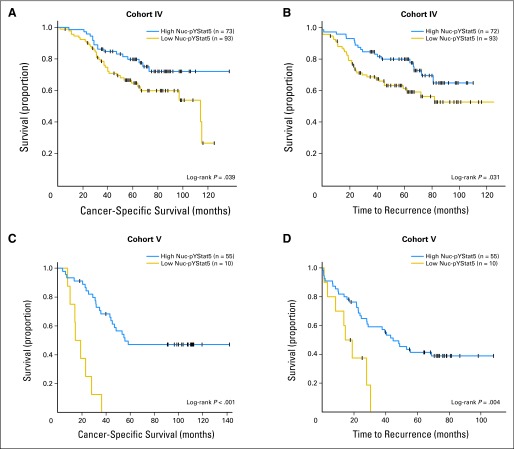Fig 3.
Low levels of nuclear localized and tyrosine phosphorylated Stat5 (Nuc-pYStat5) predict increased risk of failure of antiestrogen therapy. (A-B) Low levels of Nuc-pYStat5 detected by diaminobenzidine chromogen immunohistochemistry (IHC) and pathologist scoring in patients treated with antiestrogen therapy (cohort IV) predicted (A) poor breast cancer-specific survival (CSS) and (B) reduced time to recurrence (TTR) of breast cancer. (C-D) Immunofluorescence and quantitative automated quantitative analysis of Nuc-pYStat5 expression in breast cancer patients treated with antiestrogen monotherapy (cohort V) revealed that low expression of Nuc-pYStat5 was predictive of (C) poor CSS and (D) reduced TTR of breast cancer. Kaplan-Meier plots with censored cases (+) and number of patients per group indicated.

